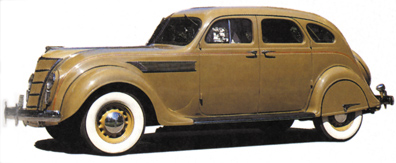Modern aerodynamics emerged around the time of the Wright brothers first powered flight in 1903. The German physicist Ludwig Prandtl (1875-1953) is generally acknowledged as the father of this modern science; it was his discovery, in 1904, of the boundary layer that adjoins the surface of a body moving in air or water, which led to a greater understanding of drag forces.
Prandtl and the British engineer Frederick Lanchester (1868-1946) later independently worked on wing theory, which explained the principles of airflow and the concept of lift. By the start of the 1920s, industrial designers such as Paul Jaray were employing wind tunnels to develop better and more efficient aerodynamic streamlining, which increased speed, reduced fuel consumption and improved stability. Jaray’s findings had a profound impact upon automobile designing, as evident particularly in the case of cars produced by Tatra, Audi and Porsche. Many of the streamlined forms of the 1930s were driven purely by stylistic concerns rather than by scientific data, or—in the case of such domestic appliances as vacuum cleaners and refrigerators—by any real need for aerodynamic performance at all. An exception was Chrysler’s Airflow automobile designed by Carl Breer in 1934, which although not a commercial success, was a remarkably advanced and influential design. Other prominent pioneers of aerodynamics include the Hungarian-born engineer Theodore von Karman (1871-963), whose research led to major advances in turbulence theory and supersonic flight.












